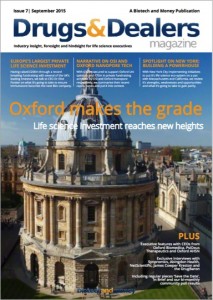Spotting baby biotech unicorns
Quality sites
- Online Casinos UK
- Casino Non Aams
- Casinos Not On Gamstop
- UK Casinos Not On Gamstop
- Best UK Casinos Not On Gamstop
- Casino Sites Not On Gamstop
- Casino Sites Not On Gamstop
- Casino Sites Not On Gamstop
- Non Gamstop Casino Sites UK
- Non Gamstop Casinos
- Best Online Casino Canada
- Casino Sites Not On Gamstop
- Non Gamstop Casino UK
- UK Online Casinos Not On Gamstop
- Best Slot Sites 2025
- Casinos Not On Gamstop
- Meilleur Casino En Ligne
- Non Gamstop Casinos
- Slots Not On Gamstop
- Non Gamstop Casino
- New Online Casinos Not Registered With Gamstop
- Casino Non Aams Sicuri
- Casino Sites UK Not On Gamstop
- Casino Non Aams Italia
- Bitcoin Casino
- Meilleur Site Casino En Ligne Belgique
- Migliori Siti Scommesse Non Aams
Valuing biotech assets, whether an early-stage private investment in a preclinical molecule or a substantial trade in a public stock, is notoriously challenging. Both the length and the complexity of drug development, with multiple parallel risks, are unusual and extreme compared with most other sectors.
This multiplicity of risks, leading to high failure rates, has led to the ‘unicorn hunting’ model of biotech investing: searching for billion-dollar winners that deliver an overall investment return, even after paying for all the losers in the portfolio. Which begs the question “what does a baby unicorn look like?”
Its easy to suppose that a sufficiently deep understanding of the underlying science and technology would give you a better chance of finding these elusive beasts than the next investor. But sadly, a formula to spot baby unicorns before they grow their eponymous horn, and everyone else can spot them too, is the 21st Century equivalent of alchemy: highly desirably but entirely unobtainable.
The flaw in that logic is the assumption that unicorns, like mortal beasts, are defined by their DNA rather than their environment (of course, environment causes variations between individuals, but it is wholly down to DNA that makes a zebra different from a horse). If unicorns developed because of their DNA (that is, factors entirely intrinsic to them) then it would, at least in principle, be possible to identify them as babies. If we had better “DNA sequencers” (metaphor for technological understanding) we would surely be able to spot those unicorns at birth.
Unfortunately, though, unicorns are made not born. And the factors that make them are almost entirely environmental. The nature of the technology itself determines the difference between bad and good, but it is outside factors that promote the merely good to great.
Consider a molecule in mid-stage clinical development. If the Phase 2 clinical trial reads out negative, it is probably worth nothing (or, at least, it would be if markets were rational – experience with anti-amyloid antibodies for Alzheimer’s Disease among other examples suggests that when the potential win is very large rationality is often suspended). If the trial is clearly positive, though, there is still a wide range of financial returns: whether a trade-sale generates a moderate return or a stellar one will depend mostly on the degree of competition for that asset (be it real or perceived).
That competition doesn’t necessarily depend so much on the qualities of the asset itself but on the timing. The feeding-frenzy around therapeutic antibody platforms in the mid-1990s saw stellar deals for average assets as pharma companies were concerned about missing a piece of the action. A similar frenzy surrounded HCV therapeutics earlier this century, with similar consequences (not everyone made as good a deal as Gilead in the acquisition of Pharmasset). Today, there is the same sort of bubble around immune-oncology assets.
If you happen to hold an adequate asset in one of these spaces at just the right time, your unspecified quadruped suddenly grows a horn slap bang in the middle of its forehead.
The trouble, of course, is that to hold such an asset at the right time you needed to have acquired it and nurtured it through a period when there was no sign of such a bubble in exit valuations.
With this worldview, spotting unicorns requires an ability to predict not just the outcome of technical development of a particular product (hard) but also the external acquisition landscape five years hence (arguably impossible). These external factors are harder yet to predict than the internal ones because the whole world outside your company is orders of magnitude more complicated than the, nevertheless complex, system inside it.
Put succinctly, then, the mantra becomes “internal factors set floors, but external factors set ceilings”.
What are the practical consequences of such an analysis?
That instead of hunting for bona fide baby unicorns (which mostly don’t exist) you are looking for babies that have the potential to become unicorns, if the environment turns out just right for them. The investing process then becomes a game of eliminating things whose DNA makes it impossible for them to become unicorns no matter what the setting. Our zoo is filled with unspecified quadrupeds, not bipeds, insects or birds. DrugBaron has called this “killing the losers” – it is a counter-selection of the unpromising rather than positive selection for the out-and-out winners.
As these quadrupeds grow up, hopefully a small proportion will be fortunate, and be the right asset in the right marketplace at the right time – and yield exceptional returns. Many of the rest will make adequate returns, because the counter-selection had eliminated projects whose internal factors made them unlikely ever to succeed. But only as the exit approaches (perhaps years after the initial investment) does it start to become clear which teenage beasts really are maturing into those sought-after unicorns. In principle, at the time of initial investment, it could be any one of them.
A second consequence then flows from the first. To have a large enough stable of candidates (because the unicornification process, requiring luck and timing, will always be rare), the cost of maintaining and developing each one needs to be kept to a minimum (without risking starving them to death). When playing a game of chance, such as a lottery, the only way to improve your returns compared to other players is to negotiate a cheaper price for the tickets.
Stretching the analogy to its limits (or beyond), biotech investing is not so much unicorn hunting as unicorn farming. Assemble a large enough herd of promising stock and, with the odds stacked in your favour, the mythical unicorn will magically appear.
Written by David Grainger, Venture Partner and Index Ventures
David joined Index in 2012 as a Venture Partner in the life sciences team. He is interested in disruptive early-stage technologies, particularly in inflammation and cardiovascular biology. David writes for both www.drugbaron.com and for Forbes.





Leave a comment